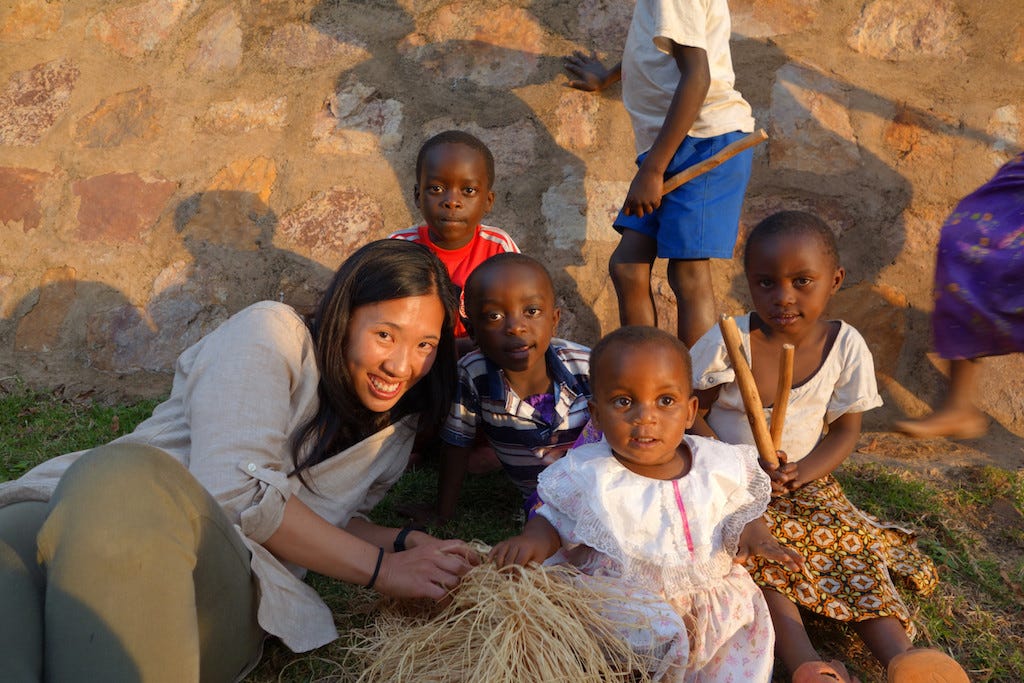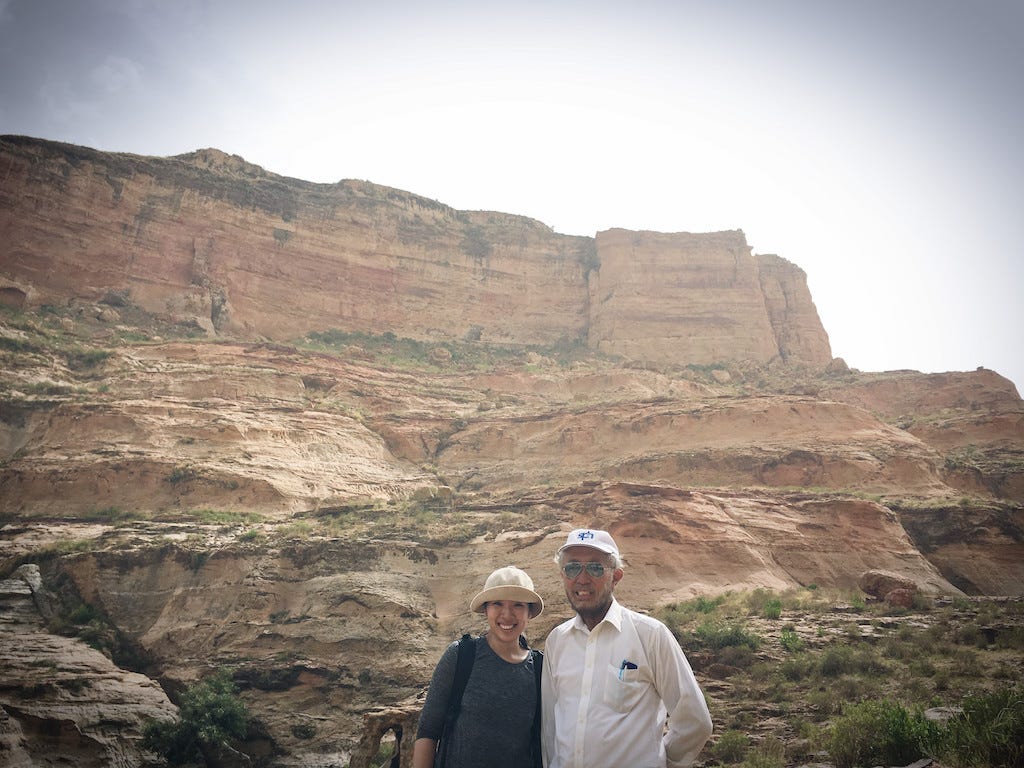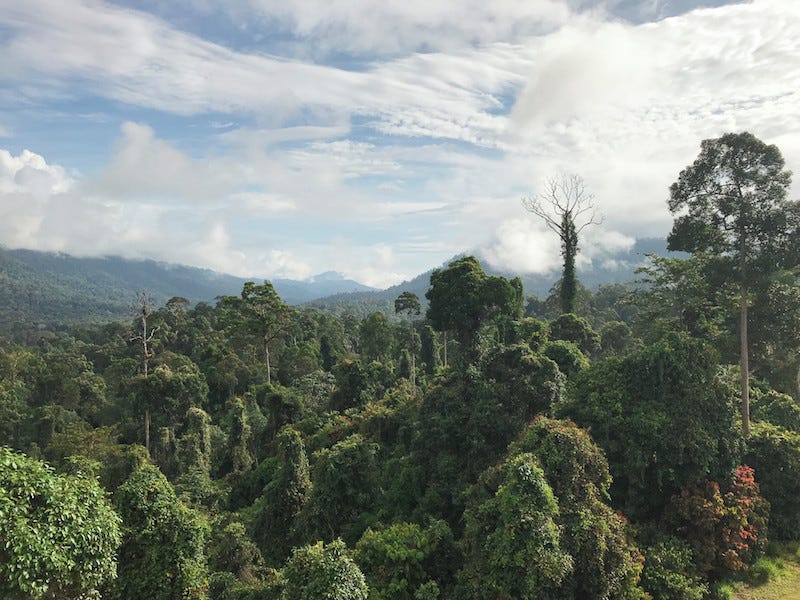What makes a destination extraordinary?
Short answer? The people. But there's still more to it than that, points out Jacinta Lim of Seek Sophie
You might think it’s the scenery, the food, the culture or the history. And you may be right. But at the end of the day, it all boils down to… the people.
They have the power to elevate (or ruin, sadly) your travel experience.
“Lina and I have realised that what makes or breaks a trip for us is whether or not we meet kind and passionate people who help us get under the skin of their country, and enable us to learn a bit more about ourselves and the world we live in,” says Jacinta Lim, co-founder and CEO of Singapore-based travel company Seek Sophie. (“Lina” is fellow co-founder Lina Gedvilaite.)
Jacinta should know; as an avid traveller and one of the heads of Seek Sophie, she and her team constantly scour the region for meaningful activities so you don’t have to. They offer unique treks and climbs, immersions and expeditions, dives and safaris in Indonesia, Malaysia, Sri Lanka and Vietnam. And they can’t possibly do all that without the help and support of the local communities, who know these areas and their homes inside and out.
“We try to engage the local guides in every country we visit, because those interactions give so much colour and context to what we’re seeing, and it is what we believe to be the best way to ensure our travel spending benefits the local communities,” Jacinta explains.
Yes, Seek Sophie is your kind of travel company if, like them, you want to: a) “empower local operators to connect directly with travellers, so that more travel spending stays in the local communities and the operators get to grow their businesses”; b) easily book a package in advance that’s created “by travellers for travellers” (meaning it really offers what it says it does); c) highlight important issues; and d) promote sustainable approaches and solutions.
“Some of the best memories I had in Bosnia revolved around the incredible guide we had. He had the most sardonic sense of humour as he cracked jokes about the role of the UN during the Bosnian war,” Jacinta relates.
“Con, my amazing safari guide in the Telupid Forest in Borneo – who used to be an ex-poacher and had been going to the jungle since he was four – taught me about the medicinal uses of every plant in the jungle.
“And then my horse cart driver in Myanmar told me that the best food in Myanmar was the eggplant, and so after that conversation, I had eggplant in every meal – and they’re still the best eggplants I’ve ever had in my life,” she adds.
There’s one more thing
Hearing Jacinta’s stories, you realise that the people do enhance your travel experience – and if you’re lucky, they can help you be in the right place at the right time as well.
They get you to locales that are so special, you just want to stop, breathe, enjoy what’s in front of you… and “take” a mental picture to preserve (and not spoil) the moment.
When things get tough or crazy, you can close your eyes and pluck that image from your brain. Remember how you felt, as well as the smells, the colours, and the sounds – and you’ll be transported. It’s an amazing thing to keep inside you, and it’s sure to brighten up your day.
So it’s good to be present during your journey, as some events may not happen again (or at least not in the way you imagine it and want it to).
Those snapshots you’ve stored for future (feel-good) reference could also be the reasons why you now see the world in a different light – so use them to make more positive connections and more conscious decisions when you travel.
You only need to look back at your own trips – and read about Jacinta’s favourite mental pictures below – to know all this to be true. Let her adventures encourage you to be more open, to reach out to more people, and to try “freezing” more memories on the spot the next time you go off the beaten path.
#1 Lalibela, Ethiopia very early in the morning
“Lalibela is an area with 11 magnificent, intricate churches carved by hand out of rose-gold rock, dating from the 12th and 13th centuries. Unlike more well-known historical places such as Petra or Machu Picchu, Lalibela is still being used by the local people to this day – so it’s living, breathing history,” Jacinta observes.
“I was tipped off by my local guide that I had to visit Lalibela before sunrise, so I showed up at 5am. There, I saw thousands and thousands of local monks, nuns, and pilgrims all wrapped in white robes, swarming the centuries-old rock-hewn churches, each chanting and singing, their voices enveloping the entire complex. It felt like going back in time and experiencing something very sacred and mystical. I looked around and could count the number of foreign travellers on one hand.
“Witnessing first-hand the practices of such an ancient civilisation still being carried on to this day was incredibly humbling. It made me acutely aware of how rich our shared history as a civilisation is. Through witnessing these ancient practices, I felt connected to those who have practised these traditions 800 years ago. It made me so grateful to be alive, to be standing on the shoulders of all the incredible histories, traditions and peoples who have come before me.”
#2 Sunset from the caves in Petra, Jordan
“When my friend and I were in Jordan, we met a couple of Bedouins who wanted to show us how they lived. So we got on their donkeys (which they called the Bedouin Ferraris) and raced up, down and all around the hills surrounding Petra where not a soul could be found. It was an exhilarating ride and I never knew donkeys could be quite so fast.
“After an hour, we arrived at the caves set deep into the hills, which they called home. They told us that even though the Jordanian government was trying to resettle all the Bedouins into a nearby village with modern comforts, their view from the cave of the sun setting over Petra every evening was far more valuable to them than electricity or running water.
“There we were, looking right at one of the world’s wonders as the sun set upon it, just four of us surrounded by miles of red rolling hills. Many people would have thought we were crazy for trusting two strangers and for going to isolated caves with them, but that view from the cave is one of the most magnificent sights I have ever seen and it is still one of my favourite travel memories. We eventually left Petra on our donkeys at 2am with shooting stars overhead.
“Whenever I have trusted someone and taken a leap of faith, I have been rewarded with an experience that I can only call magical. And that’s fundamentally the core of what Seek Sophie is trying to do – we want to make these magical experiences more accessible to people so that through these experiences, they can learn more about themselves and the world.”
#3 The campgrounds of Queen Elizabeth National Park, Uganda
“My first ever solo trip was a two-week road trip around Uganda. Before I went, I was a little terrified – it was my first time in Africa and I didn’t know what to expect. I was a little scared of being alone, still really scared of the dark and leery of insects.
“Reality turned out to be entirely different from the fears in my head. I spent the next two weeks with some of the kindest people I’ve ever met, and camping in some of the most mind-blowingly beautiful places I have ever seen in my life.
“One of the places was Queen Elizabeth Bush Lodge, where the campground was just metres away from the edge of a river where hippos slept. At night, the hippos would come out to the campground to look for food, so if we went to the toilet at night, there was the risk that we would come face to face with a 4,000-pound hungry hippo! It just boggled my mind how close I was to these magnificent wild animals, and it was incredibly humbling to contemplate how entirely insignificant I was next to them.
“That trip made me realise that whatever my worst fears are, most of the time they won’t materialise. Instead, what I got was breathtaking beauty, incredible kindness from people, and a new way of thinking about the world.”
#4 A rock face in Tigray Region, Ethiopia
“When I was in Ethiopia with my parents a couple of years ago, we went to Tigray, a part of Ethiopia that had rock-hewn churches carved into the top of mountains. They were built that way a thousand years ago to deter hostile religions from attacking these churches.
“My dad and I decided to climb up one of these mountains. We were climbing for a couple of hours before we got to a sheer, near-vertical rock face. All the rock face had were little pockmarks and little else. My first reaction when I saw it was: ‘You’ve got to be kidding!’ I was ready to turn back and was hoping that my dad would want to turn back too.
“But as we got closer to the rock face, neither of us suggested turning back, so we started climbing up with our bare hands, grasping onto the closest indent and literally clawing our way up. It took us an hour or more just clawing our way up and trying our best not to look down. The mountain was so steep that when we came down, we had to come down almost entirely on our bums.
“It was only the next day that my mum told me my dad had a fear of heights, and he was actually terrified when we did the climb. He didn’t let on any of it! That’s one of the many examples of my parents’ courage. It really stuck with me because if my dad in his seventies is still actively doing things that scare him, then I really have no excuse not to!”
#5 The rainforest of Maliau Basin, Malaysia
“Last year, I went trekking in Maliau Basin in Borneo, otherwise known as 'Sabah’s Lost World'. It is a 130-million-year-old rainforest and one of the most untouched places in the world. Entering Maliau feels like entering Jurassic Park. There’s no one to be seen for miles, and the flight of the hornbills overhead sounds almost like the beating of Pterosaurs’ wings,” Jacinta recalls.
“Conservationists have told us that it’s one of the most important places for conservation in the world, because it forms the baseline for studies on how our ecosystem used to be before human activities.
“Before I went to Maliau, I used to believe that off-the-beaten-path places should stay exactly that way – untouristed, and untouched. I believed that special places in this world should be kept a secret. But Maliau changed my views on that entirely. It should be protected (and it is tenuously being protected at the moment), but there has also been coal and gold found in the area, and locals have had to fight against local authorities not to convert it into another, more lucrative use.
“Conservationists and locals alike tell us that their best hope for these places is for more people to see these places, so that they can raise awareness and the need for conservation, and for more tourism dollars to flow in. Perhaps only then will the local authorities commit to preserving these places for future generations,” Jacinta asserts.
“Travel is a really complex issue, and as we travel around the region scouting out places, our hearts are broken time and time again as we see the battle between man’s need for resources and nature being repeated in Maliau, Telupid, Kinabatangan… the list goes on.”
It begs a closer look
We've stated that the people can influence your view of a destination. But these people – like the local operators and local communities – need help to be able to continue their good work, and in the process influence other travellers further.
“We fight for these places to be conserved by speaking up about them, writing about them and telling people about them,” Jacinta points out.
You can also spread the word. “There are so many wildlife sanctuaries around Asia that still allow elephant riding, or allow travellers to get so close to the orangutans that they feel threatened. There’s coral bleaching and coral bombing in so many beautiful dive sites around the world. Then there are questions of how we deal with over-tourism – can we divert people away from the touristy places, and to more off-the-beaten-path and fascinating places in the world that need the travel spending more?
“We want to give more of a voice to these issues, because we fundamentally believe that travel is a powerful force for good, and can make an incredible positive impact on the world,” Jacinta emphasises.
“We believe that when more travellers speak up and are aware, they will be moved to make a change. We believe that together, we can build a better world simply by being more conscious of how we travel.”
The people would love that.
For more information on Seek Sophie and their offerings, you can go to their website. You can also follow them on Facebook, Instagram and Twitter.











